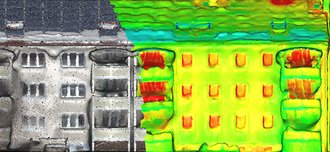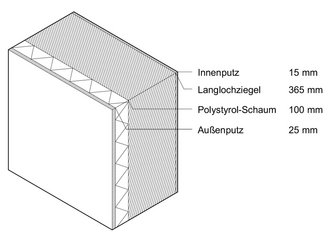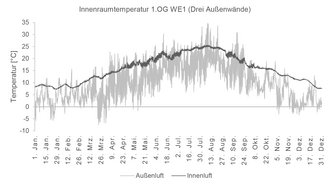Winter Without Gas: Bauhaus-Universität Weimar Researchers Simulate Indoor Climate
The Building Physics Department has determined that unheated living spaces cool down to 7 or 8°C during an average German winter. Although a gas shortage in Germany is extremely unlikely to occur, proper heating and ventilation in the winter help to save energy and ensure a comfortable indoor climate.
Mara Geske, indoor climate expert in an interview: »Each degree that we can lower room temperature by saves gas, therefore lowering energy costs«
According to the Federal Statistics Office of Germany, approximately 41% of private households relied on natural gas for their household energy needs in 2019. Although this proportion is declining, natural gas remains by far the most common energy source for residential heating, heating water, cooking and operating electrical appliances. In light of the cut to Russian gas supply, the German government is calling upon private consumers to reduce their energy use in order to comfortably get through the upcoming winter. But how can we use less gas while maintaining our comfort standards?
Researchers at the Building Physics Department have been testing and analysing ways to improve the energy use in existing buildings and urban areas for years with the goal of reducing CO2 emissions. One area that their research has focussed on is the simulation of heating and energy requirements through the »smood« research project, which uses residential neighbourhoods in Thuringia. A 1970s apartment building in Buttelstedt, whose windows and walls were renovated in the 1990s, is the project’s test model. »There is a huge number of residential buildings in Germany that are similarly built and have a similar energy efficiency level«, explains Mara Geske, Head of the »Energie« working group at the Building Physics Department. »That’s why we chose this building as our model for studying how indoor temperatures develop during an average German winter when gas isn’t available for heating«.
Indoor Temperature Depends on Various Factors
The development of indoor temperatures was simulated based on a digital architectural model and the typical weather profile for the region. Each flat was calculated as its own thermal zone, and both external energy sources (e.g. solar energy through windows) and internal energy sources (e.g. electrical energy from the stove, laptop and body heat of the flats’ residents) were taken into account. The calculations showed that the temperatures of a flat on the first floor with three external windows could drop to a minimum of 7 or 8°C on average without being heated.
»The indoor temperature depends on various factors, such as the outdoor temperature, type of construction, and the renovation state of a building. Whether the exterior walls are constantly exposed to the sun or wind is also a factor«, Geske adds. The simulation should thus only be understood as a guideline. The behaviour of the residents also significantly influences the energy demand. »It is crucial to regulate heating individually based on the weather, time of day, and in the winter to ventilate only briefly so that indoor temperatures do not drop too low«, says the expert. Furthermore, the warm air from radiators should be able to flow freely in order to optimally heat rooms. Draughty windows and doors should be properly sealed and carpets can help provide additional comfort.
In an interview, engineer Mara Geske provides recommendations on how to save energy and improve our well-being, even in colder temperatures.
For further information, please contact Mara Geske, head of the Building Physics Department »Energie« working group in the Faculty of Civil Engineering by phone:+49 (0) 36 43 / 58 34 39 or e-mail: mara.geske[at]uni-weimar.de
Kontakt
Bauhaus-Universität Weimar
Claudia Weinreich
Pressesprecherin
Tel.: +49(0)3643/58 11 73
Luise Ziegler
Mitarbeiterin Medienarbeit
Tel.: +49(0)3643/58 11 80
Fax: +49(0)3643/58 11 72
E-Mail: presse[at]uni-weimar.de
Web: www.uni-weimar.de/medienservice



